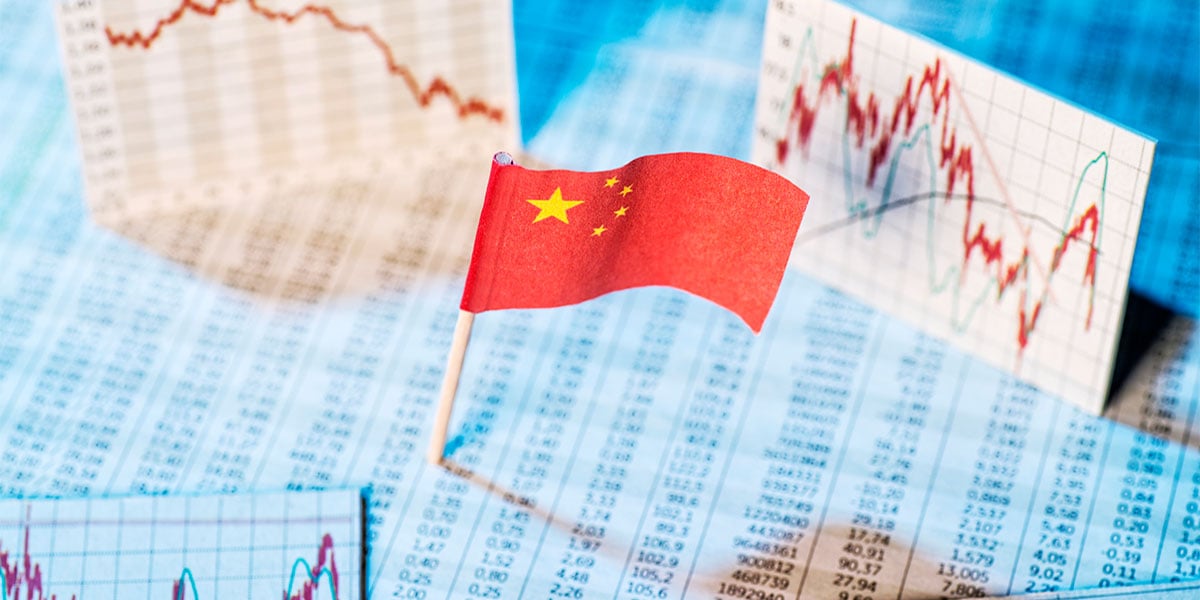Download the PDF

China appears on track for their 2024 growth target
Tracking the Chinese economy is difficult at the best of times. Since COVID it has only gotten harder as the economic data have been thrown around by lockdowns and re-openings, as well as a collapse in the property market. This week, we received the latest report card on the Chinese economy with the release of the March quarter national accounts. The data were surprisingly strong.
Year-ended real GDP growth in China was reported to have picked up from 5.2% to 5.3% in the March quarter. This was much stronger than market expectations, which were for growth to slow to a 4.8% pace. No forecaster in the Bloomberg survey had expected year-ended growth to increase in the March quarter. The reason for this was relatively simple. The March quarter last year had been very strong, as the economy benefitted from a re-opening bounce after the end to the COVID-zero policy. If you thought that quarterly growth in the March quarter 2024 was going to be unable to match that seen in the March quarter 2023, then the year-ended rate would fall. A matter of pure arithmetic.
However, this was not the case. Even though quarterly growth in the March quarter was softer than that seen last year, downward revisions to the first half of 2023, combined with upward revisions to the second half, transpired to see a pick-up in year-ended growth.
Leaving aside our lingering concerns over the quality and veracity of Chinese economic data, it is clear the Chinese economy has started 2024 more strongly than expected. The improvement in momentum is highlighted by the sequential outturns, with real GDP rising 1.6% over the March quarter (or 6.6% quarterly annualised), up from 1.2% in the December quarter (or 4.9% quarterly annualised).
The Chinese economy has benefited from a recovery in exports and an improvement in the manufacturing sector in the March quarter. The rebound evident across the global manufacturing industry over recent months has had a flow-on impact to China, given the widespread use of Chinese components across the global value chain. Furthermore, authorities’ push towards their ‘Made in China 2025’ agenda continues to help support high-tech industries.
The impact of the boost in fiscal support is also evident by a modest pick-up in investment. Year-ended growth in fixed asset investment firmed from 2.7% in the December quarter to 4.5% in the March quarter. Although property investment remains very weak (down 9.5% y/y in Q1), non-real estate investment continues to trend higher, rising a solid 9.3% over the year to the March quarter as fiscal support continues to provide a modest boost to infrastructure investment.
Notwithstanding the ongoing challenges confronting the property market, the Chinese consumer remains reasonably resilient. Growth in nominal retail sales were up 4.7% over the year to the March quarter, although some signs of softening have started to emerge towards the end of the quarter.
The Chinese economy continues to experience deflation, with the GDP deflator falling 1.1% over the year to the March quarter, modestly below the flat outturn for the CPI. As a result, nominal GDP growth in China was just 4.2% over the past year and suggests ongoing challenges for Chinese corporate earnings.
Prior to the national accounts release, both the QIC and consensus view were for real GDP growth in China to average 4.7% in 2024. However, following the better start to the year, it appears the Chinese economy is on track to achieve the government’s growth target of “around 5%” for 2024. Nonetheless, we are not getting carried away by the better-than-expected Q1 outturn. Significant headwinds to the Chinese economy remain unresolved, particularly the weakness in the property market and rising government debt. Signs of increased global trade tensions continue to build, as evidenced by Biden’s increased tariffs on Chinese steel this week. As the impact of the recent near-term fiscal stimulus fades, we would expect growth in the Chinese economy to slow to below a 4½% pace in 2025.
Looking further ahead, demographic headwinds and slowing productivity growth will lead to an ongoing decline in the potential growth rate of the Chinese economy. The working-age population is already falling, and the demographic trends suggest this will only get worse over coming decades. Without significant productivity enhancing reforms, it will not be long before growth in the Chinese economy slows into the 3’s, which we expect will occur in 2027. Growth in China may have surprisingly risen in the March quarter, but fundamental challenges remain and 5% growth rates are unlikely to endure past 2024.
